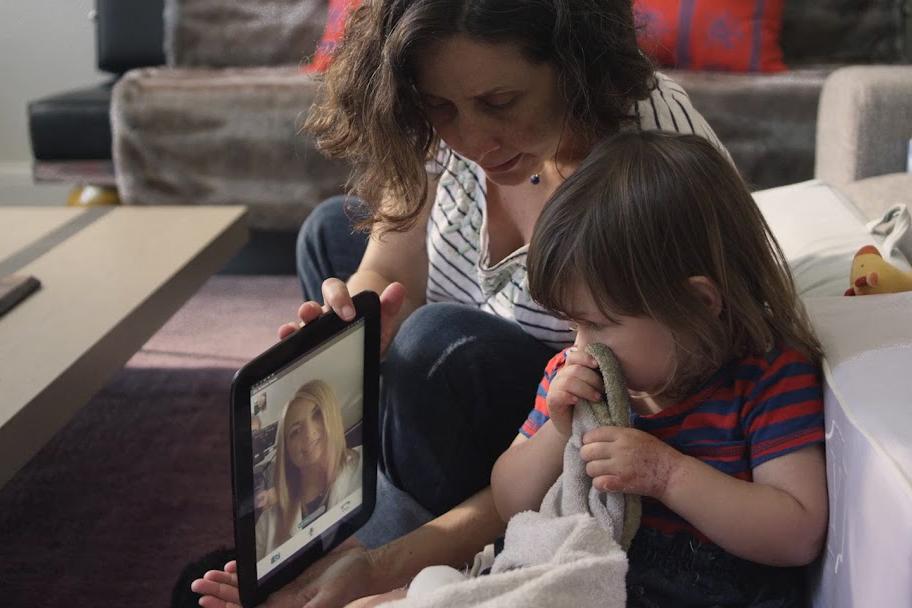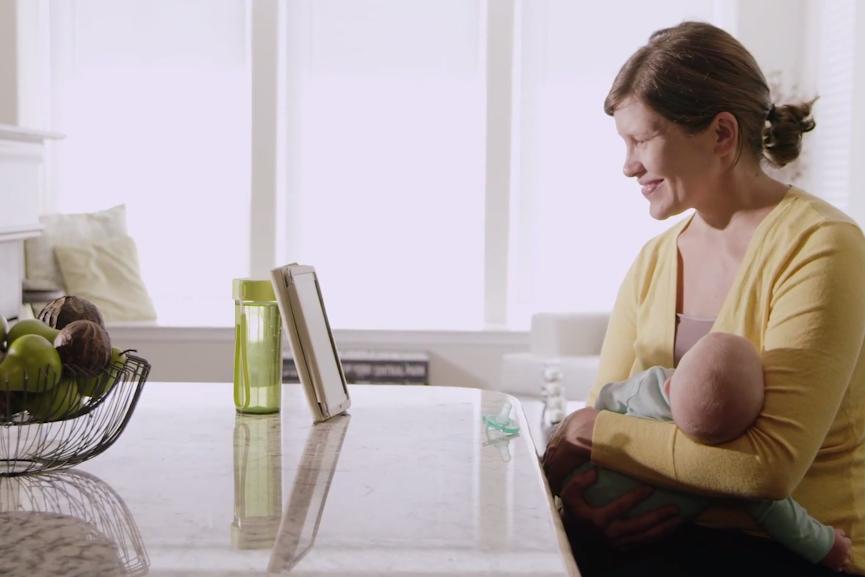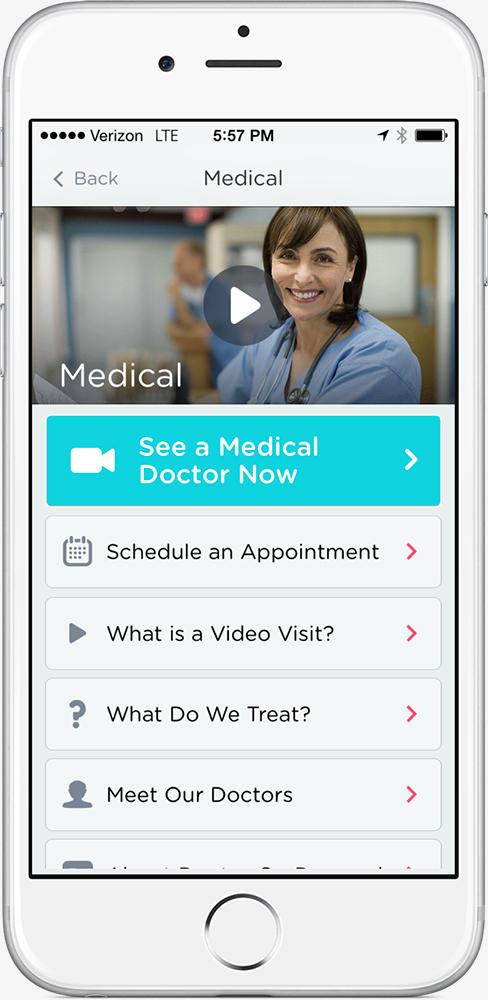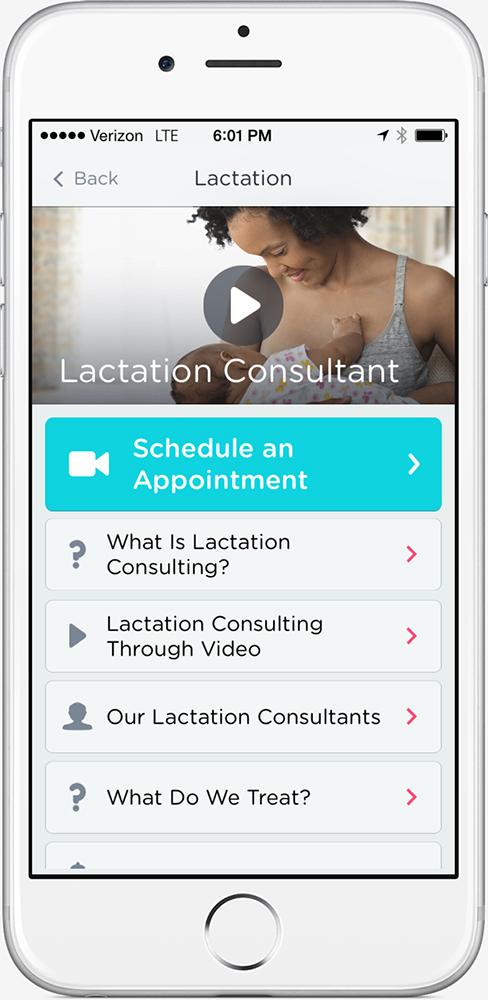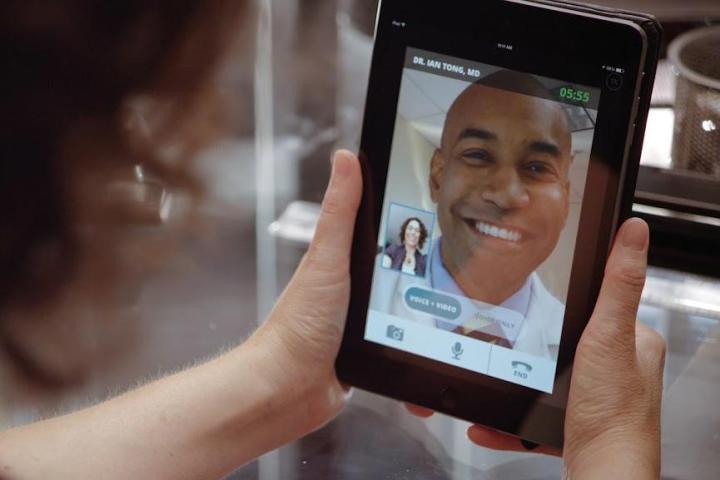
Doctor on Demand is one of a few apps that aim to offer house calls via video chat. The startup, which is backed by infamous TV therapist Phillip McGraw AKA Dr. Phil, offers appointments with state-licensed doctors over video for just $40.
Psychologist appointments are a touch more expensive at $50 for a 25-minute session and $95 for a 50-minute session, but it’s still much cheaper than an in-office visit. If you want to meet with a lactation consultant, you’ll also pay $40 for a 25-minute session or $70 for 50 minutes.
How it works
Doctor on Demand’s staff can treat medical concerns such as allergies, the flu, colds, urinary tract infections, pink eye, and other mild problems. Its psychologists can treat everything from mild depression and stress, to smoking, drinking, and relationship problems. The doctors can also prescribe medications and send them to your local pharmacy. All you need to do is download the free app for iOS or Android.
“We’ve made it really hard to interact with the medical industry.”
Once Doctor on Demand is installed on your phone, you’ll be prompted to make an account and add your payment information. You’ll enter the basics, including name, date of birth, sex, and address. Since the doctors can actually e-prescribe most medications through the app, Doctor on Demand will ask you to locate your preferred pharmacy, too. Once you enter or scan in your credit card info, you’ll have access to Doctor on Demand’s 1,400 doctors and 300 psychologists.
You can browse through each doctor and therapist’s profile to find out which one is the best fit for you. All of their education, certifications, and specialties are listed right there. You can also search based on appointment time. If you are a little leery of the idea of a video visit, Doctor on Demand has several videos and explanatory pages to help explain how it all works.

Once you set up an appointment, you’ll be asked to state why you’re calling, mention any medications you’re taking, and other basic info – just like you would at the doctor’s office. If you’re meeting with a psychologist, Doctor on Demand will ask you to fill out a couple of optional clinical assessments with 7-8 questions each. These can help assess your overall mental wellbeing, and help track your progress over time. Then, you simply wait for your appointment to start and begin your video chat with a doctor, psychologist, or lactation expert who’s certified in your state.
The doctors behind it
To find out more about Doctor on Demand’s mission and the doctors behind the app, Digital Trends spoke with co-founder and CEO Adam Jackson and Dr. Pat Basu MD, Doctor on Demand’s Chief Medical Officer.
“Some things can easily be treated at home, and that’s what we’re here for.”
Jackson told Digital Trends that every doctor is carefully vetted and interviewed. Basu said that the team initially reached out to friends and colleagues, many of whom were from Stanford, to see who might be interested in working for the company and assisting patients over video chats. Most doctors were enthusiastic about the idea, and since then, Doctor on Demand has received more applicants than it can accept.
The doctors are given special training on how to use the app, set up their home offices, and position the camera well for video chats. Basu told us that most doctors fall in love with video appointments because they can work from home and truly focus on their patients. In turn, patients are more comfortable, talking to doctors and psychologists from the comfort of their homes.
At the end of each visit, the patient is asked to review the doctor and rate the appointment from 1 to 5 stars. Doctor on Demand doesn’t publish the reviews, but it does read them and consider reader feedback carefully, Basu said. Based on the feedback Doctor on Demand receives, both the doctors and patients benefit from the interaction.
“We read patient comments and it’s amazing to see what they have to say,” Basu said. “One of the most common responses is, ‘Wow, the doctor looked at me the entire time,’ — that doesn’t normally happen in the office. Doctors describe the same phenomenon. They’re more dialed in and focused on the patient.”
It’s revolutionizing health care with patient-first perspective
Although it’s early days yet, and there’s not much official data on the value of video appointments versus in-office visits, Doctor on Demand’s team believes that its service could truly revolutionize health care.
“Doctor on Demand’s team believes that its service could truly revolutionize health care.”
“We’ve made it really hard to interact with the medical industry, and it’s hard to get appointments,” Basu said, adding that it can often take 22 days to get an appointment, and patients typically have to wait to see the doctor for 3 to 4 hours – especially if they’re in the emergency room or an urgent care office. To make matters worse, Basu estimates that 80 percent of ER cases shouldn’t be there.
“There’s a whole host of things Doctor on Demand is perfect for,” Basu said. “Some things can easily be treated at home, and that’s what we’re here for. We’re not trying to replace visits to the doctor’s office. There are some things you need to come to my office for.”
Doctor on Demand hopes to lessen the burden on emergency rooms and urgent care clinics by taking care of the people who really don’t need to receive in-office care.
“Kids are a great use case,” Basu said. “Either you know they’re actually fine and don’t really need to go see a doctor, or it’s the same infection you’ve seen time and time again, and you don’t have time to deal with the hassle.”
However, Doctor on Demand isn’t just about saving you time. The company also wants to make patients as comfortable as possible, and open up access to medical and mental health care to all.
When it comes to mental health, the service aims to help those who may not have been able to afford a psychologist in the past, as well as those who fear the stigma of walking into a psychologists’ office.
“The health care industry is one of the last to take advantage of mobile technology, but that’s starting to change,” Basu said.
Insurance coverage is coming
The company serves 46 states, and even though many insurers don’t cover the service yet, both Jackson and Basu assured Digital Trends that they are hard at work on this issue. In fact, over the course of the next year, Doctor on Demand aims to be covered by most insurances.
Currently, insurance coverage varies carrier by carrier, but many people with high deductible plans and HSA debit cards can pay for Doctor on Demand visits with their insurance. The company is also working to get built into employers’ plans. For example, Comcast employees are already covered when they book appointments with Doctor on Demand.
Even though most users’ insurance doesn’t cover Doctor on Demand visits yet, Basu points out that the low cost and convenience factor are usually enough to encourage people to use the service when they’re in a pinch.
“It really comes down to this,” Basu said. “How much is your time worth?”
